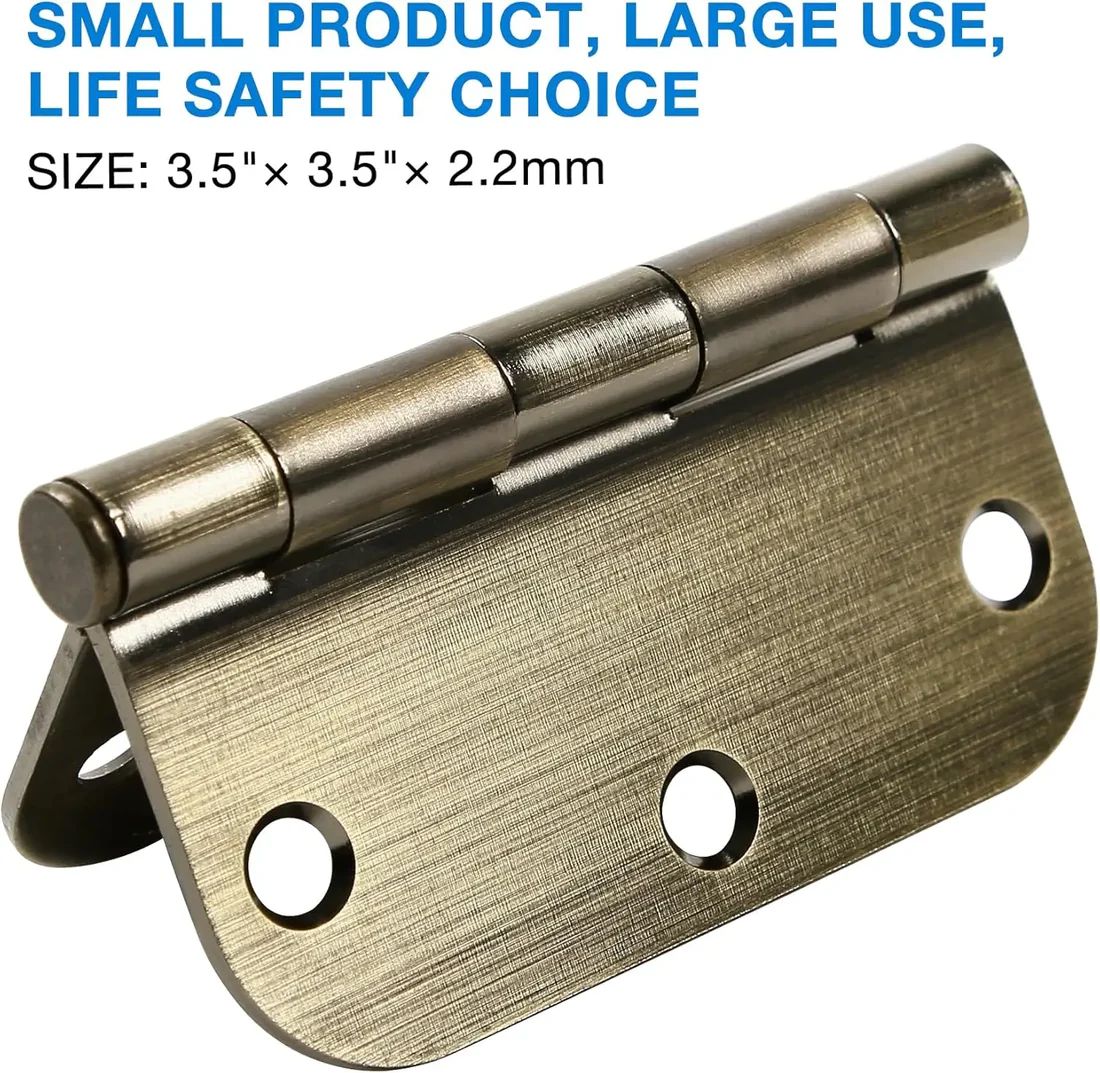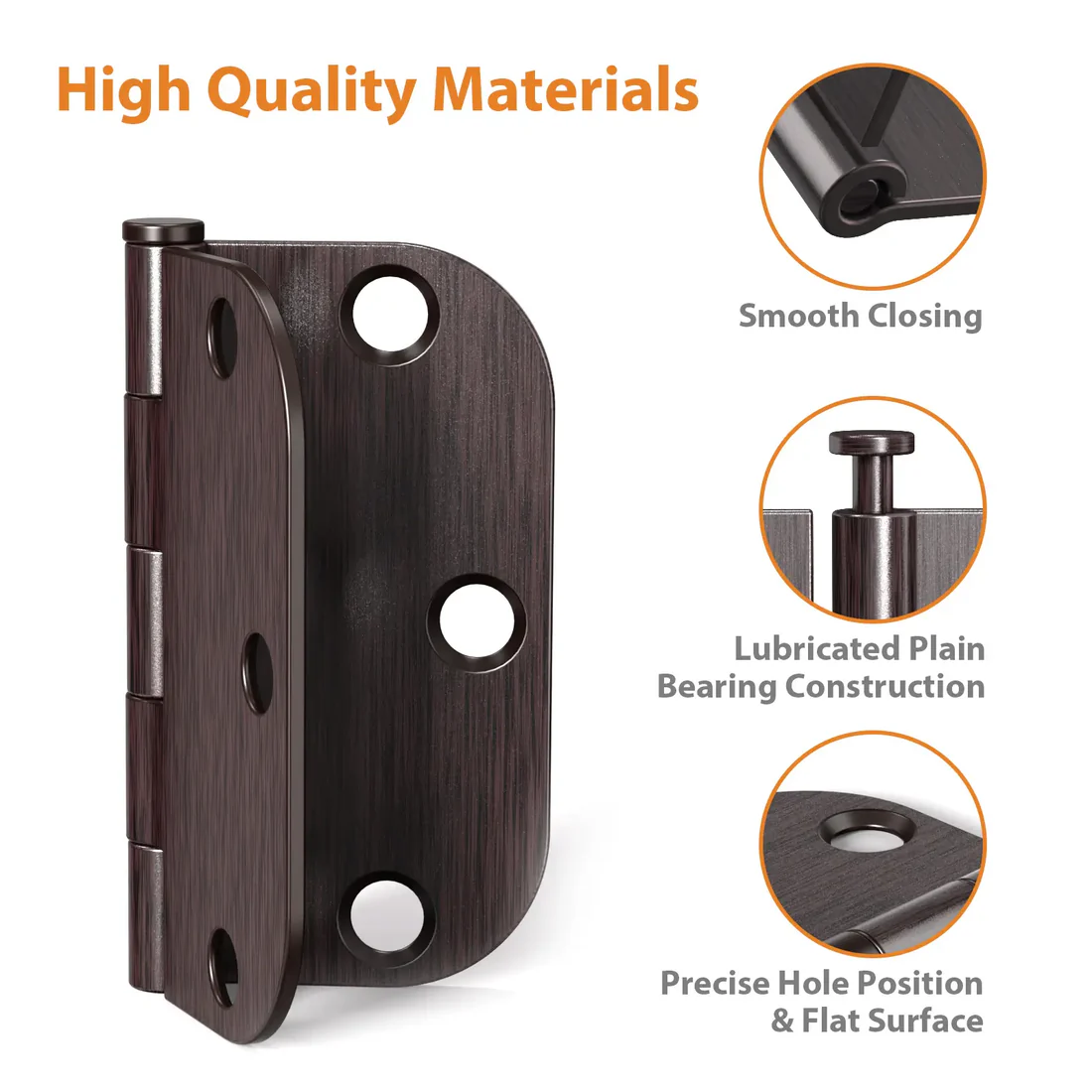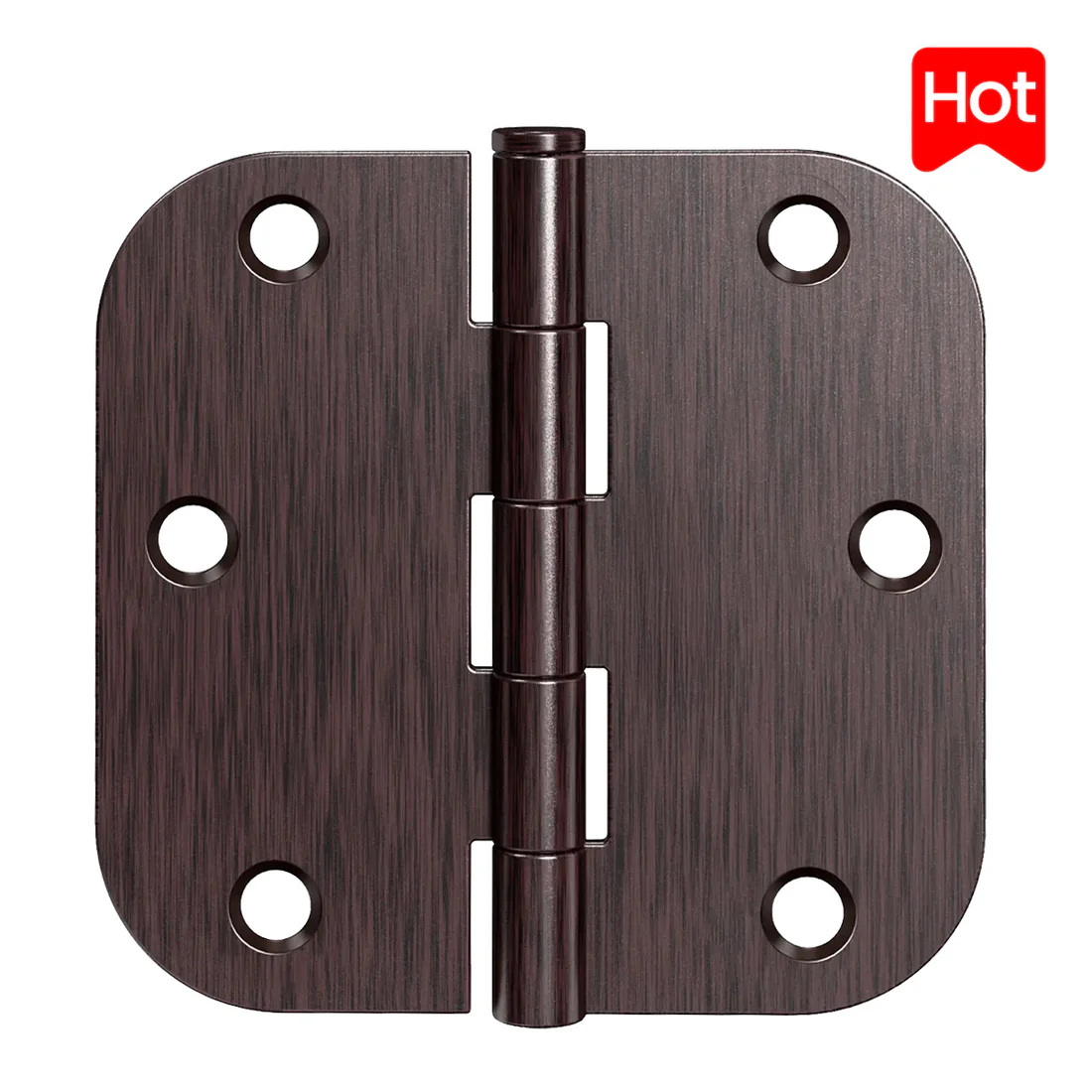How to Fit Concealed Hinges Without Stress or Mess
Fitting a home hinge requires attention to detail and the right approach. Industry surveys show beginners often ignore door weight, use incorrect screws, or skip pilot holes. Those who learn how to fit concealed hinges avoid these mistakes and achieve a clean, professional result.
1.Ignoring door weight
2.Using wrong screws
3.Skipping pilot holes

How to Fit Concealed Hinges: Tools and Materials
Essential Tools for a Clean Installation
Professional carpenters recommend specific tools for anyone learning how to fit concealed hinges. These tools help achieve precise results and keep the workspace organized.
·Pencil
·Tape measure
·Combination square
·Drill/driver
·Forstner bit
·Rafter square
·Self-centering drill bit
·Phillips drill bit
·Shims
·Pozidriv screwdriver
Each tool serves a unique purpose. The pencil and tape measure allow accurate marking. The combination square and rafter square help maintain straight lines. The drill/driver and Forstner bit create clean cup holes for the hinges. Shims support the door during installation. The Pozidriv screwdriver and Phillips drill bit ensure secure screw placement. Using these tools reduces mistakes and keeps the process smooth.
Choosing the Right Concealed Hinges and Screws
Selecting the correct hinges and screws is essential for a successful installation. The following table outlines important factors to consider when deciding how to fit concealed hinges for different cabinet types:
| Factor | Description |
|---|---|
| Cabinet Style | The hinge must match the cabinet style, such as butt hinges for traditional cabinets and European hinges for modern ones. |
| Door Weight and Size | Heavier doors require hinges with high load-bearing capacities, while lighter doors can use simpler hinges. |
| Durability and Maintenance | Soft-close hinges last longer due to reduced wear, while butt hinges are robust for heavy doors. |
| Installation Complexity | Some hinges require precise installation, affecting the choice based on project time and effort. |
| Cost Factors | High-end hinges may cost more but offer better functionality; budget options like butt hinges are available. |
For example, the AGB Eclipse 3.0 hinge supports up to 40 kg (88 lbs) with two hinges and 60 kg (132 lbs) with three hinges. Matching the hinge to the door weight ensures stability and longevity. When learning how to fit concealed hinges, careful selection of hardware prevents future problems and guarantees a professional finish.
How to Fit Concealed Hinges: Preparation Steps
Measuring and Marking for Accurate Placement
Accurate measurement forms the foundation of a successful concealed hinge installation. Woodworking guides recommend confirming cabinet door overlays before starting. He or she should use a reliable tape measure and a combination square to mark hinge positions. Many professionals suggest watching a video guide to learn precise measurement techniques. Double-checking each measurement helps prevent costly errors.
Common mistakes often occur during this stage. Individuals sometimes use worn-out tools, which can lead to incorrect markings. They may also rush through the process, resulting in miscalculations. To avoid these problems, he or she should:
·Ensure all measurements are accurate.
·Avoid using damaged or worn tools.
·Take time to measure and mark carefully.
Following these steps allows anyone to learn how to fit concealed hinges with confidence and precision.
Setting Up a Tidy and Safe Work Area
A clean and organized workspace reduces stress and prevents mistakes. Before installation, he or she should remove distractions and ensure a stable working surface. Proper lighting is essential for visibility and accuracy. Using a sturdy table or workbench maintains a comfortable working height.
Professionals recommend collecting all necessary tools and materials before beginning. Keeping the workspace tidy throughout the process minimizes errors and creates a safer environment. Consider these tips for optimal preparation:
Tip: Organize tools in a tray or toolbox for easy access during installation.
Tip: Sweep away dust and debris before starting to keep the area clean.
Preparation sets the stage for a smooth installation and a professional finish.
How to Fit Concealed Hinges: Step-by-Step Process
Marking Hinge Positions Precisely
Accurate marking ensures the hinges align perfectly and the door operates smoothly. Professionals follow industry standards for hinge placement:
·Place the top hinge 5 to 7 inches from the top edge of the door.
·Position the bottom hinge 10 to 11 inches from the bottom edge.
·Space the middle hinge evenly between the top and bottom hinges.
·Mark both the door and frame with a pencil for exact measurements.
Specialized jigs and tools simplify this process. The following table highlights features that improve accuracy and efficiency:
| Feature | Description |
|---|---|
| Hinge Inset Positions | 3, 4, 5, & 6mm positions allow quick adjustments without recalibration. |
| In-built Depth Stop | Prevents over-drilling, ensuring consistent results and protecting material integrity. |
| Pilot Hole Plate | Ensures hinges are mounted squarely at a precise 90-degree angle for optimal functionality. |
| Pin Guide System | Minimizes setup time and guarantees positional accuracy. |
| Spring Loaded Drill Guide | Protects door surfaces from damage during drilling. |
| Large Clamping Area | Secures the jig during use for stability. |
| Carbide Tipped Drill Bit | Included for cleaner cuts, especially in man-made materials. |
Jigs with built-in indexing tabs and measuring scales provide repeatable results. Adjustable cams help set the proper hinge offset. Durable, lightweight materials make these tools easy to handle. Anyone learning how to fit concealed hinges benefits from using these specialized tools.
Drilling Cup Holes Neatly and Safely
Drilling cup holes requires precision and care to avoid damaging the door. Most European-style concealed hinges need a 35mm cup hole. The 35mm Forstner bit is the industry standard for this task, especially in kitchen cabinets. Always verify hinge specifications before drilling.
Best practices for clean drilling include:
1.Select the correct drill bit. Use a Forstner bit for 35mm holes. For smaller holes, choose a brad-point bit to prevent wandering and reduce tear-out.
2.Back up the workpiece with scrap wood. This prevents tear-out and splintering at the exit point.
3.Drill from both directions if clamping a backer board is difficult. This technique produces clean edges.
Tip: Secure the door with clamps before drilling to prevent movement and ensure safety.
Following these steps helps anyone understand how to fit concealed hinges without damaging the cabinet doors.
Attaching Hinges to the Door Correctly
Proper attachment of hinges guarantees stability and smooth operation. The recommended sequence includes:
1.Measure and mark the door for hinge cup placement.
2.Drill holes for the hinge cups using a Forstner bit.
3.Install the hinges into the door, ensuring they remain straight.
When attaching hinges, avoid overtightening screws. Use the correct torque setting on the drill to prevent stripping. Select a drill with adjustable speed or torque settings for best results.
Note: Tighten screws until snug, but do not force them. Over-tightening can damage the hinge or door.
Learning how to fit concealed hinges involves careful attention to these details for a secure installation.
Mounting the Door to the Cabinet
Mounting the door requires precise alignment for a professional finish. Professionals use the following techniques:
1.Attach a straightedge or draw a line below the cabinet opening to mark the overlay. For ½ inch overlay doors, mark ½ inch below the opening.
2.Align the door so the hinge mounting brackets rest against the cabinet face-frame. Mark the cabinet’s face-frame through the elongated slots in the mounting brackets.
3.Drill pilot holes in the center of the marks.
4.Install the mounting plate on the cabinet.
5.Use the elongated slots for vertical adjustment, allowing movement of 5/32 inch (4mm).
6.Adjust in-and-out alignment with the screw farthest from the cabinet door, allowing a range of 3/16 inches (5mm).
7.Adjust left-right alignment with the screw closest to the cabinet door, allowing a range of 3/32 inches (2mm).
Tip: Snap the doors onto the mounting plates with help from a second person for easier handling.
These steps ensure the door sits level and operates smoothly. Understanding how to fit concealed hinges includes mastering these alignment techniques.
Adjusting Hinges for Perfect Alignment
Modern concealed hinges offer multiple adjustment mechanisms for fine-tuning. The table below summarizes common adjustment features:
| Type of Hinge | Adjustment Mechanisms |
|---|---|
| Adjustable Door Hinges | Height, depth, and lateral position adjustments using specific screws. |
| 3D Door Hinges | Adjustments in three dimensions: height, depth, and lateral position using screws. |
| 180-Degree Door Hinges | Angle adjustment for door swing, along with height, depth, and lateral adjustments. |
Professionals follow a step-by-step process for perfect alignment:
1.Measure the overlay and mark the cabinet.
2.Align the door and hinges, then mark pilot holes.
3.Attach the doors to the mounting plates.
4.Install cabinet door bumpers on the side opposite the hinges.
5.Adjust the hinges for vertical, in-and-out, and left-right alignment.
Common alignment issues include gaps and uneven spacing. To correct these problems:
1.Inspect the door’s alignment.
2.Tighten hinge screws.
3.Adjust hinge placement by loosening and tightening screws.
4.Deepen the hinge mortise with a chisel if necessary.
5.Add padding behind the hinge leaf using wood shims.
6.Reinforce worn screw holes with wood filler.
7.Test the door’s alignment and make final adjustments.
Tip: Open and close the door several times to confirm smooth operation and proper alignment.
Mastering these adjustments completes the process of how to fit concealed hinges and ensures a flawless result.
How to Fit Concealed Hinges: Avoiding Common Mistakes
Preventing Damage to Doors and Cabinets
He should recognize the most frequent causes of damage during concealed hinge installation.
·Misalignment often occurs when hinges shift or are not properly aligned.
·Loose hinges may result in doors that do not close properly or even detach.
·Improper installation techniques can harm the door or cabinet structure.
A professional always checks alignment before drilling and uses the correct tools for each step. He avoids overtightening screws, which can split wood or strip threads. She inspects the hinge position and tests door movement after installation. These habits help prevent costly repairs and maintain the integrity of cabinets and doors.
Fixing Misaligned Hinges Quickly
When hinges become misaligned, he can correct the issue efficiently by following a systematic approach:
1.Identify the problem. Crooked doors, uneven gaps, or doors that do not close fully signal misalignment.
2.Make the adjustments. He uses the side-to-side screw for spacing, slides the hinge up or down for height, and adjusts depth to ensure proper closure.
3.Tighten screws securely. This step maintains alignment and prevents future shifting.
Specialized tools simplify realignment without removing the door:
1.Door lifters help adjust door height for perfect alignment.
2.Knuckle benders fine-tune hinges and eliminate sagging.
3.Hinge tweakers allow minor adjustments for smooth operation.
A professional keeps these tools on hand to address misalignment quickly and maintain a flawless finish.
Keeping the Installation Mess-Free
Maintaining a clean workspace ensures a stress-free installation. He employs surface cleaning techniques, such as dusting with microfiber cloths to trap dust without scratching. She selects cleaning solutions suited to the material, using soap-and-water for tiles and specialized cleaners for marble. Extension tools reach high-dust areas like vents and moldings. He combines dry and wet cleaning methods, changing cloths regularly to prevent dust spread. She organizes cleaning in phases, starting with larger debris and finishing with fine dust particles. Final touch-ups guarantee no spots remain missed.
Learning how to fit concealed hinges includes keeping the workspace tidy, which leads to a professional result every time.
How to Fit Concealed Hinges: Cleaning Up
Keeping Your Workspace Tidy Throughout
A tidy workspace reflects a professional approach. He gathers all tools before starting and places them in a designated tray or toolbox. She sweeps away dust and wood shavings after each drilling step. They use a handheld vacuum or a soft brush to remove debris from the cabinet and door surfaces. Clean surfaces prevent scratches and ensure accurate hinge placement.
He wipes down tools with a damp cloth before storing them. She checks the floor for stray screws or hardware. They dispose of packaging and unused materials promptly. This routine keeps the area safe and organized. A clean environment reduces the risk of accidents and helps maintain focus during installation.
Tip: Regularly pause to clear away dust and debris. This habit saves time during final cleanup and prevents mistakes caused by clutter.
Final Touches for a Professional Finish
Final inspection ensures the concealed hinges function perfectly and the installation looks professional. He checks that all doors close completely. She examines the gaps between doors and cabinet frames, looking for even spacing. They listen for any unusual noises when opening and closing the doors. Sagging or wobbling doors signal the need for further adjustment.
A level helps verify that doors hang straight. He avoids rushing this process, taking time to make precise adjustments. She confirms that each hinge operates smoothly and that the doors align with the cabinet face. They verify proper closure after installation.
·Ensure doors close all the way
·Check for even gaps
·Listen for noise when opening and closing
·Look for sagging or wobbling doors
·Use a level during installation
·Avoid rushing the process
·Verify proper closure after installation
These steps guarantee a flawless finish and long-lasting performance.
Fitting concealed hinges becomes straightforward with the right approach. He prepares carefully and pays attention to detail. She follows each step and checks her work. They achieve a professional result without stress or mess.
Tip: Consistent practice improves skill and builds confidence for future hinge installations.

FAQ
How deep should the hinge cup hole be?
Most concealed hinges require a 12-13mm deep cup hole. He should always check the manufacturer’s instructions for the exact depth.
Can he reuse old screw holes when replacing hinges?
He should avoid reusing old holes. New pilot holes provide better grip and prevent the screws from loosening over time.
What if the cabinet door does not close properly after installation?
He should check hinge alignment and adjust the screws. Small adjustments usually fix gaps or sticking doors.
Related articles
-

A Homeowner’s Guide to Picking the Right Door Gate Hinges
Choose door gate hinges that fit your door, support its weight, and match your environment for secure, long-lasting performance in any home project.Sep-19-2025 Learn More >> -

The Role of Security Hinges in Preventing Break-Ins
Security hinge features like non-removable pins and heavy-duty steel help prevent break-ins, boosting home safety and door strength against forced entry.Sep-19-2025 Learn More >> -

Understanding the Variety of Furniture Hinges
Types of furniture hinges include concealed, butt, piano, and specialty options, each offering unique benefits for durability, style, and function.Sep-19-2025 Learn More >> -

Simple Ways Decorative Hinges Improve Home Decor
Decor hinges instantly upgrade doors and furniture, adding style, durability, and value to any home decor with minimal effort.Sep-19-2025 Learn More >>
To Provide You with Better Service

Contact
Tel: +8613325838282
Add: 6265 Providence Way Eastvale,CA 92880




